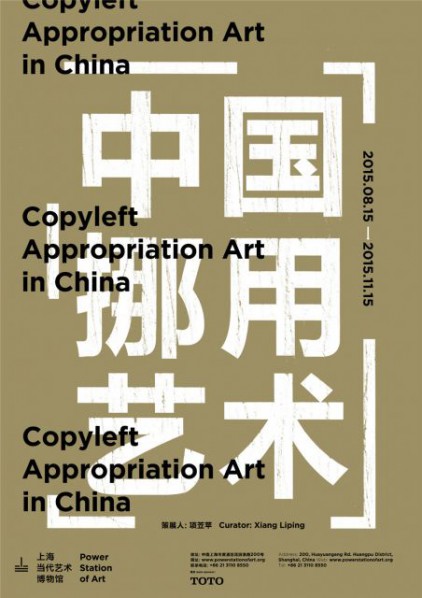
In contemporary society, the phenomenon of Shanzhai – “copycat”– pervades every sphere, and plagiarism never ends. When we look back at the origins of Chinese contemporary art, the accusation that it worships the West incessantly lingers; when we reflect on the development of Chinese classical art, we may see that relentless imitation of predecessors is the label that has been commonly placed on Literati painting especially since the late Qing Dynasty. In light of these facts, one can’t help but wonder: what is the real reason the Western “appropriation” approach seems to fit China so particularly well? Are Chinese really what Westerners accuse us of being – disrespectful of copyright, with no sense of innovation? Are the current phenomena of Shanzhai and artistic plagiarism in China related to the tradition of Linmo – copying –that has historically existed in Chinese art? If Westerners can make attempts at total “appropriation” with no concern for copyright, why can’t Chinese practice Shanzhai, which at least involves making changes to the original work? Will an excess of reproduction and reproduced works affect the continued creative progress of art?
The exhibition proposes the concept of “Appropriation Art in China” for the first time. The curator expanded and altered the Western concept of appropriation art, integrating appropriation, linmo and Shanzhai with the intention of elaborating a concept of “Appropriation Art in China” that links the past with the present. Appropriation art in China, then, consists of at least three phenomena: linmo, which is related to Chinese traditional art; appropriation, which is related to modern art and the contemporary art of the West; and Shanzhai, which has connections to contemporary society. By looking at the creative practices related to these phenomena within Chinese contemporary art, and by discussing the interactions between different approaches to artistic production and new technologies and materials; repetition and creativity or originality; intellectual property and the sharing and inheritance of knowledge, the curator attempt to render apparent the differences between the Chinese and Western concepts of appropriation.
The exhibition title, Copyleft, comes from the GNU General Public License, which is the most widely used free software licensing agreement, and employs the Copyleft terms of use to guarantee end users that their rights to use, study, share (copy), and modify the software are preserved. Here, Copyleft is used to represent three manifestations of copying (linmo, appropriation, and shanzhai) that occupy a common ground, and signifies both "the right to copy" and "creating a copy".
1. Linmo
Linmo Copying Related to Traditional Chinese Art: The ancient practice of linmo copying found in traditional Chinese painting is not only a way for Chinese artists to study painting, but also a means to engage with and preserve import works, which in itself is a form of artistic creation. It is a tribute to earlier masters but also an expression of personal attitude and taste. Linmo began in the era of hand-copying, but even in this age of digital copying it continues to rely on manual labor. As it evolves from deliberate forgery as a form of skills training, it changes from a purely artistic pursuit to having legal implications. The artists in this section are not in a conventional sense copying from one painting to another, but rather, by employing new approaches and new media, re-appropriating classical images as brand new experiences, thereby opening up and expanding on the aesthetic values of traditional art.Artists: Xia Xiaowan, Qiu Zhijie, Yao Jui-chung, Chen Chun-Hao, Peng Wei, Yu Xuhong, Yang Yongliang, Ni Youyu
2. Appropriation
"Appropriation" began in the West during the era of mechanical reproduction, and involves the full or partial use of ready-made objects or existing artworks. It has altered the boundaries between art and life, weakening intellectual property rights and the author's prerogative, while questioning the concept the original: should innovation alter existing structures in the process of reinvention? In this process of copying can the object that results gain the significance and distinction of a unique creative artwork? "Appropriation," through the deconstruction of the original, brings forth new ideas and new understanding, but it also risks infringement. Chinese artists have carried out both a creative distillation and a locally informed expansion of "appropriation art." Yet, it needs to be noted that “appropriation” has been used as an artistic shortcut in art creation, and such abuse has reduced artistic standards at times.
Artists: Sui Jianguo, Li Zhanyang, Shi Yong, Yang Zhenzhong, Li Qing, Ni Youyu, Hu Qingtai, Hu Yun, Wang Guanshan
3. Shanzhai
Shanzhai culture (copycat culture) in the era of digital reproduction is the embodiment of artistic creation in the sphere of economic activities, and is having impact across a range cultural and business areas. Shanzhai is a revolution in thinking, a kind of folk wisdom based on innovative practicality, which creates new value and a new democratic equation. Shanzhai through the production of duplicated products, to a certain extent, realizes a form of social justice, such as with Shanzhai cell phones that have allowed everyone regardless of financial status access to the convenience and pleasure of high-technology. The Shanzhai phenomenon also reflects the individual’s desire for celebrity status, with ordinary products attempting to gain the stature of brand names that are sought after; the diverse range of imitation present in Shanzhai activities represents an important release of public creativity. Perhaps, it is time to use a more neutral or even appreciative gaze in sizing up Shanzhai.Artists: Alan Chan, Han Feng, Zhou Tiehai, Qiu Zhijie, Jiao Xingtao, Li Qing, Gao Yan, Chung Chaokang, Ye Funa
About the exhibition
Curator: Xiang Liping
Dates: Aug 15, 2015 - Nov 15, 2015
Opening: Aug 14, 2015, 17:30, Friday
Venue: 5F, Power Station of Art
Courtesy of the artists and Power Station of Art, for further information please visit www.powerstationofart.org.




























